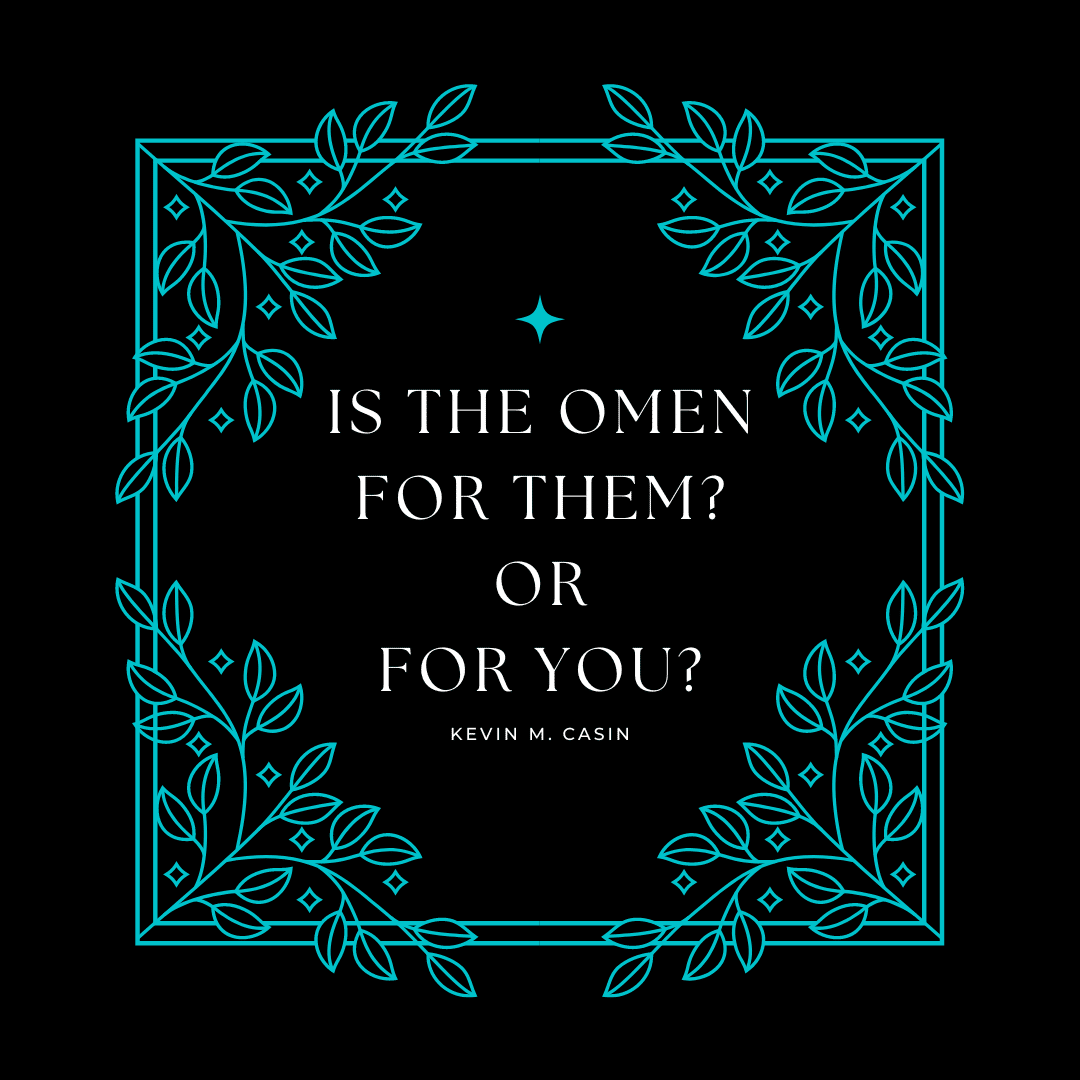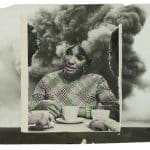Greetings and salutations, readers!
While we continue to cultivate our last issue of 2022, I am back from my less-than-enjoyable covid-cation to present the wonderful Guest Editor Q and A with Omen editor Kevin M. Casin. Kevin is not only an accomplished author, but also an editor for the rapidly-growing (no pun intended) Tree and Stone Magazine.
Read on to learn about his experiences on all levels of the publishing process, get insight on how to read the Omens in your life (and in the slushpile), and, once you’re finished enjoying these answers, head over to Tree and Stone for more exciting open calls for speculative fiction from diverse voices.
Q: First and foremost, I always start with a classic question for every guest editor: What was your experience like working with Apparition Lit as an editor? What would you want our readers to know about how we choose our TOC?
A: I’m so grateful to the Apparition Lit team for letting me join as a guest editor. It was a tremendous honor and I learned so much. I’ve had really no formal training in creative writing—everything I’ve learned is from videos, articles, and from experience—and it’s nice to learn from fellow editors, especially ones in a terrific magazine like Apparition Lit. I’d like the readers to know the TOC selection was completely a team effort. Everyone read the stories, evaluated them, and everyone decided. It was great!
Q: Apparition Lit is not your first foray into editing. You recently launched Tree and Stone and have set about making quick work of publishing a range of powerful stories. I imagined the motivation to take on such an endeavor came from a deeply personal and creative space. What motivated you to get started, and what has the process been like for you? Bonus question: in our Omen editor’s meeting, we talked a bit about the process of designing and building the perfect cover. We are quite proud of our covers, so we definitely know it’s a process, and are happy to talk about this with our editors and artists. Can you share your cover process, as well?
A: My editing journey started as a Guest Editor for Boundaries, a Patreon-based zine series named MYRIAD by Hexagon Magazine. It was my first opportunity to put together an entire issue: I came up with the cover, selected the stories, edited them, and helped to publish them. I loved the process so much, and I had already been thinking about starting a magazine, so I jumped right in.
I started Tree and Stone with the idea of publishing both literary and speculative fiction because I love both and I’ve always liked blurring lines especially when it came to creativity. I didn’t know how the community would respond or if anyone would even submit—because why would they, I’m not a big name or anything—so I made a commitment to myself to publish at least one issue during the year, four if I was lucky. Turns out, I did five, one of which is a special issue called Queer as F* (many more of these to come). It’s been a very exciting process and a whole other creative endeavor to put together an issue. I’ve loved it so much!
To find cover art, I search Instagram, Twitter, ArtStation, DeviantArt, anywhere I can find artists. I know I’ve found the image when it catches my attention and makes me feel something. The picture has to hold me, make me explore the details, and in a way, make me feel like a small part of something really big. I also like the cover to display some kind of hope. In these dark times, I think we could all use a little bit. I’m in the process of working to commission art for each issue, so I’ve been looking for queer artists who illustrate cartoonish characters and use vibrant colors. One image I’ve been hunting for, and trying to develop a concept for, is a science fiction depiction of Nature. Not quite sure what that would look like, but I’d love to see ideas!
Q: For our editors who also like to submit, I like to ask what has being an editor of your own publication taught you about the nature of crafting a story for a specific call, submitting and being accepted? Or rejected?
A: For me, story selection has little to do with craft. We get many terrific stories, all beautifully crafted, checking all the “great writing” boxes, but if there’s no connection between me and the story, I can’t publish it. And the writer probably wouldn’t want me to publish it. A rejection doesn’t mean the story is bad, flawed, or unworthy, it simply means I didn’t connect with it, I didn’t feel it was right for me, or—and most
importantly—it doesn’t fit with my vision. I like to find stories with styles I can’t find in other places. An author can follow a traditional genre structure or subject and I will publish it if I connect with it and I love it so much, but mostly I’m looking for stories that are non-traditional. Most of the stories I want are ones that cross the boundary between literary and speculative fiction (i.e. fabulism/surrealism). I’d also love to read more literary fiction submissions.
Again…a rejection does NOT equal bad. It means the story hasn’t found its people yet, but it will.
Q: At the time of this blog, your Queer as F* issue is re-open for submissions. You have already published a vast and wonderful array of writers and stories, and I am looking forward to seeing even more. You also openly identify on the Tree and Stone website as queer. What have you found to be most effective at creating an affirming space for queer writers and queer stories? Where do you see the gaps, where other publications could improve, in encouraging queer writers to submit?
A: I hope I am creating an affirming space for queer writers and queer stories, and I am actively working to improve any deficits. I want all members of our community and our supporters to be able to have their voices heard. I want the Queer as F* series to celebrate and sustain our voices which centralize queer representation. I think one way I have made an affirming space is by being someone from the LGBTQIA+/queer community and being at the helm of the magazine. More so, recently, I welcomed a team of First Readers, many of whom identify as queer. Queer writers and creatives are here, we are everywhere, and we are submitting, and hopefully being published. I think it’s important to not only reserve submission space and announce specific calls for marginalized voices and creatives, but to also publish them. And many magazines are publishing these stories and I hope they will continue to support and encourage many more stories beyond special anthologies and the magazines amplifying those creatives. Finally, I’d like us to give more love and appreciation for small presses, many of whom showcase work from marginalized communities, including queer creatives. If it were not for these small presses, I probably would never have been published or felt like my voice was worthy of sharing. Pro-rate, genre markets are great, necessary, and must be preserved, but so do small presses.
Q: In addition to being a busy editor, you also work in a governmental position doing cardiovascular research. I, too, work in a science-heavy government position, and often find that my two worlds are very divorced: one of being a creative and artist, and one of being very serious and focused. Both are equally rewarding, but rarely come together. Being a stranger to cardiovascular science myself, do you find your editing/writing and research worlds overlap at all? Do they balance in some way? Or have you found a good blend and middle ground of the two?
A: I’ve always found the two worlds to overlap. Not necessarily in content, but in style. When I do research, I like to think outside the box and come up with new ideas and experiments. I’ve always believed scientists are creatives who may not have realized it yet. As scientists, we have to conjure up strange worlds to explain our observations. I mostly deal in biochemistry and molecular biology. I can’t actually see the processes I’m studying, but I piece them together—I’m worldbuilding—and the proteins I’m interested in are my characters and I’m trying to understand what they’re doing—their plot—and so on and so on. I’ve never understood why we have to believe that creativity and science can’t go together. Why can’t reasoning be an art?
Q: Finally, in preparation for Omen, you called upon some tarot cards and a bit of astrology to generate excitement for this spectacular issue. I’m wondering…in your early explorations, what omens did you receive, either in the cards or stars or elsewhere from the universe, about how this experience would turn out? Now that we are at the tail end of your time with us, how did you see these omens come to fruition, or not? Just to share, I heard a song the day we met for our editors meeting that led me to believe I would be getting the short vampire fiction I’ve been hoping to see in the slush pile. While we landed some of my all time favorites stories on this issue, sadly the vamp story never came across my desk…
A: I’m so sorry to hear about the vamp story!
Very briefly, in March 2022, right when the pandemic hit and (most of) the U.S. went into lockdown. It was the time when Saturn entered Aquarius and conjunct Jupiter. This marked the beginning of my Saturn return, which in astrology happens about every 30 years and marks a time of transition in the native’s life. For me, this return and conjunction–also a big deal–happened in my 5th house of creativity and pleasure. When I started undergrad and decided to turn away from becoming a musician and become a doctor–I used to joke its because I wanted to eat–I promised myself when I got older and “established” I would pursue my creativity. It wasn’t a bad idea. I don’t regret my decision. But in March 2022, the lockdown triggered something in me. I had written in secret for a long time and now I wanted to give publishing a try. So I started a Medium account to self-publish and sent out submissions to literary magazines. And here I am. And I’m pretty happy so it’s going great!
All my spiritual practices lead me to where I am, including tarot. Right before the pandemic–seriously–I jokingly pulled three cards from my partner’s deck and asked, “what will the future be like?” Big mistake. But it was a joke! The three cards I pulled were “Judgement”, “Knave of Wands”, and “Death”. Scary cards on their face, until I interpreted them for myself and my life. To me, they were signaling an opportunity was coming. I didn’t know it would be a pandemic–and that certainly was not a happy, fun time–but it was the chance the plague brought. It was, and still is, a transformative time. I’m happy the stars and the cards helped guide me to where I am today.
An important piece of advice my partner always reminds me if/when I do a reading, especially for other people: “is the omen for them, or for you?” Was the vamp vibes were getting for the slush pile, or was it inspiration for you? Maybe the vampire story you were sensing in the slush pile wasn’t by someone else, but by you? Just putting that out there…
Blog Photo by jasper benning on Unsplash
-
 Marie Baca Villa Blogger/Submission Reader
Marie Baca Villa Blogger/Submission ReaderMarie Baca Villa is a Chicana writer and artist in California. She has a master’s degree in psychology and used her education to build a long career in crime victim advocacy. As a fan of speculative fiction, she loves anything involving strange worlds, complex characters, and unexplained phenomenon. She’s a bonified cat lady, covered in tattoos, and she loves cussing, beer, and flaming hot cheetos. You can find Marie on Twitter @okay_its_marie






